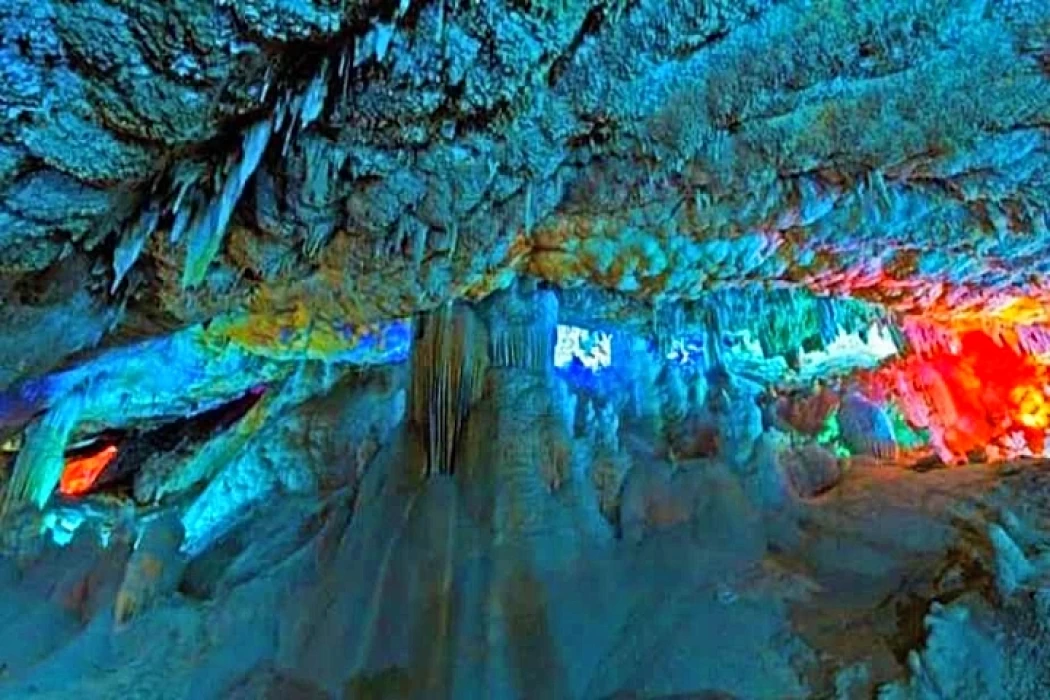
Sannur valley Cave protectorate
Sannur valley Cave protectorate
In the depth of the mountain and 70 kilometers east of the city of Beni Suef, you can see a scene that you will not forget as long as you live, you will see the ability of the Creator to carve stones in the form of glacial streams hanging from the ceiling of a cave, which was discovered by chance during the exploration of marble, it is “Wadi Sannur Cave” in Beni Suef Governorate, and it is one of the most important tourist attractions in Egypt, because of its proximity to Cairo, and it is a unique geological masterpiece and classified as the third site in the world.
It was only chance that revealed its existence in 1989, in the Wadi Sannur mountain area east of the Nile in Beni Suef governorate, to remain a witness to the Eocene era dating back 40 million years, as on a very ordinary trip for quarry workers and locals in search of marble that spread in the area, a cave was discovered with Alabaster crystals hanging from its ceilings at the entrance to the cave to turn with the sun's rays into natural crystalline colors of pure white.
The geologists immediately moved to the site, and immediately the Prime Minister's Decision No. 1204 of 1992 was issued and the area was declared a natural reserve, in accordance with Law No. 102 of 1983 regarding natural reserves, and Article 3 of the decision stipulated that any actions, actions, activities or procedures that would damage and degrade the natural environment, harm wildlife or compromise its aesthetic level are prohibited.
The surprise was that this deep cave was formed as a result of chemical reactions of groundwater, underground and mixed with limestone since the Eocene era, and produced the most beautiful and finest types of marble in the world called “Alabaster”, which is used in the manufacture of decorative utensils.
When your curiosity and love of discovery takes you inside the cave, you will penetrate inside the cave to see a scene created by the Almighty, from dazzling sculptural formations that words cannot describe, you will see stalagmites, stalactites, curtains and marble columns, and you will wonder how he carved inside the cave with two large structures, to the right and north of the opening leading to its interior.
With a depth of 15 meters, Wadi Sannur Cave extends about 700 meters into the ground, and in the right part of the lobby you will see bright limestone formations that take different shapes, in the form of pears, islands, coral reefs, and many formations that you can take your imagination and call them whatever you want, as if you are under a sky where you give free rein to your imagination in interpreting the drawings of clouds.
With a depth of 15 meters, Wadi Sannur Cave extends about 700 meters into the ground, and in the right part of the lobby you will see bright limestone formations that take different shapes, in the form of pears, islands, coral reefs, and many formations that you can take your imagination and call them whatever you want, as if you are under a sky where you give free rein to your imagination in interpreting the drawings of clouds.
In October 1994, the Environmental Affairs Agency brought in some experts in the field of caves from outside and inside Egypt to prepare studies on the development of the reserve, and at that time a number of important visions, concepts and recommendations were developed to advance the region.
In November 1994, the protected area was exposed to torrential rains that caused water to leak into the cave, and the same thing was almost repeated in March 1995, which posed a danger to the internal cave formations and immediately called on officials at the Environmental Affairs Agency to expedite the preparation and implementation of some flood reservoirs in the area in order to protect it from the effects of destructive torrents.














